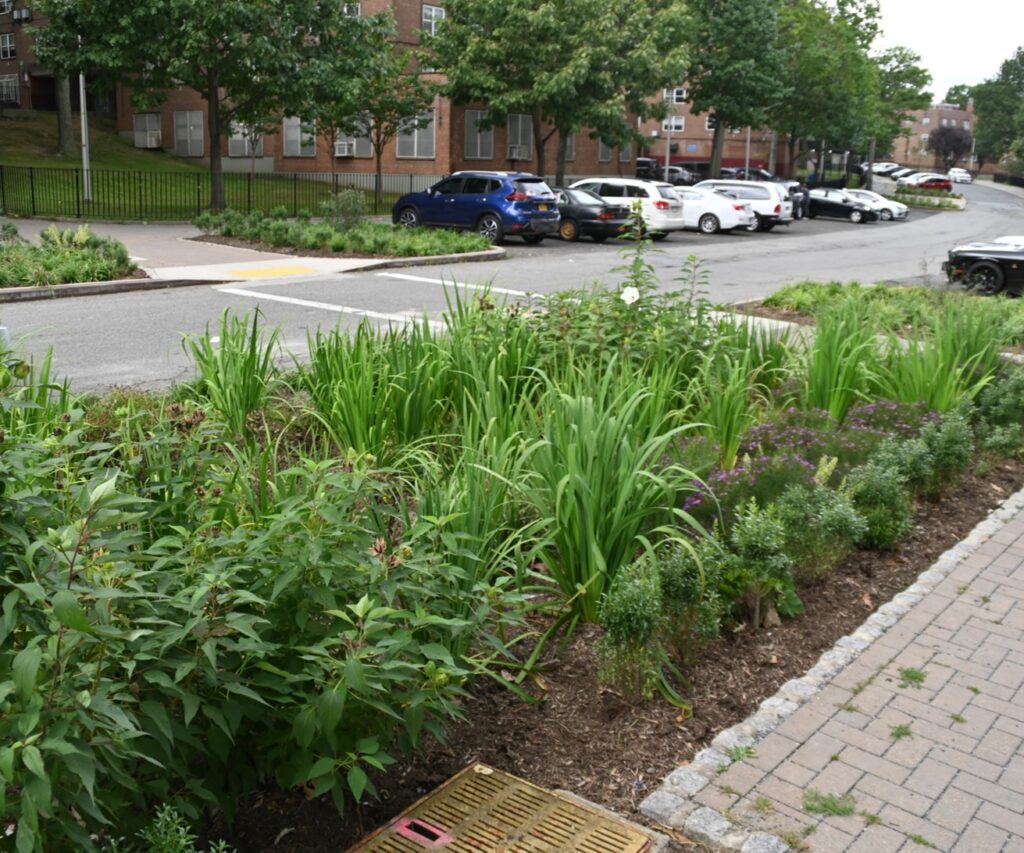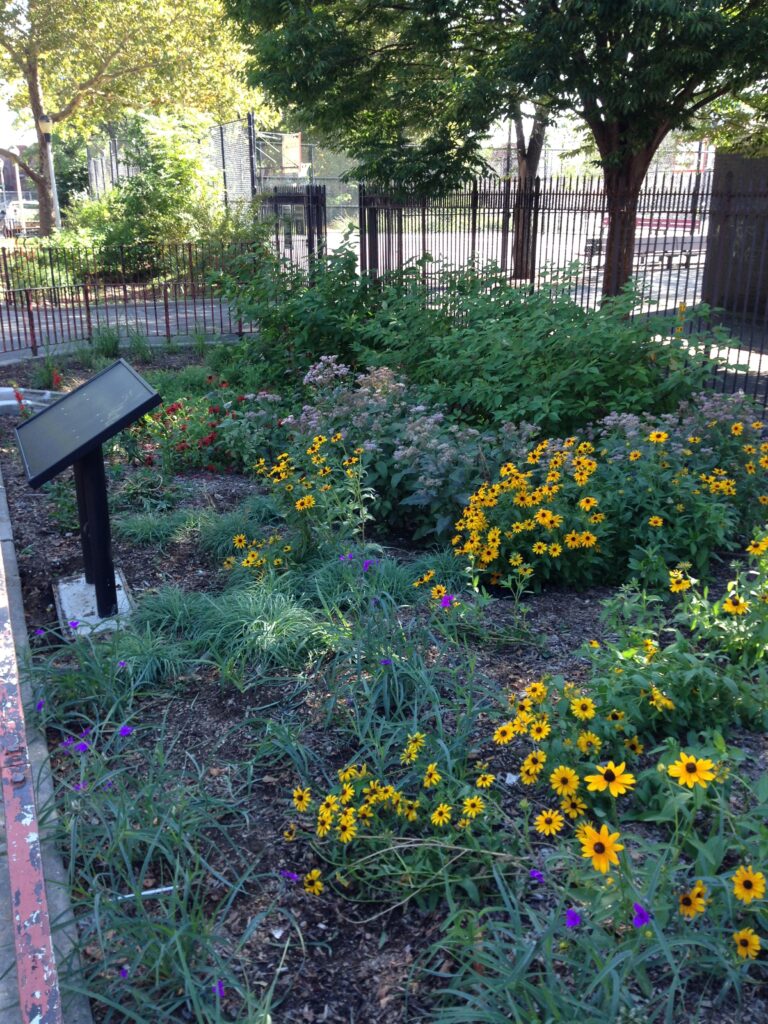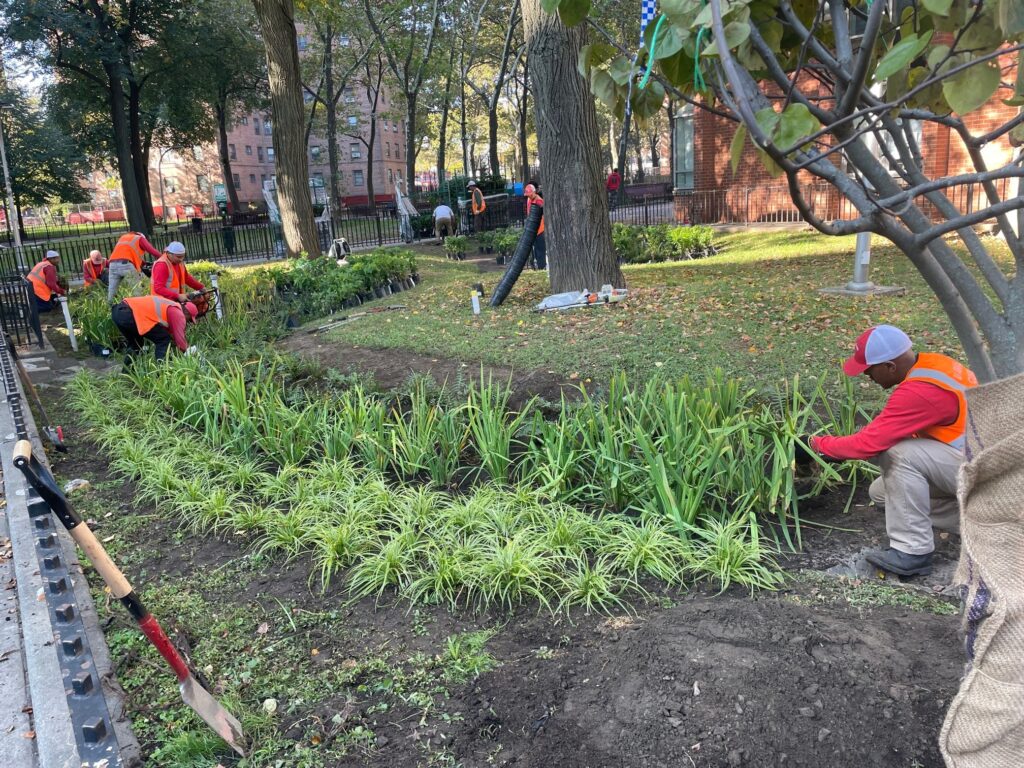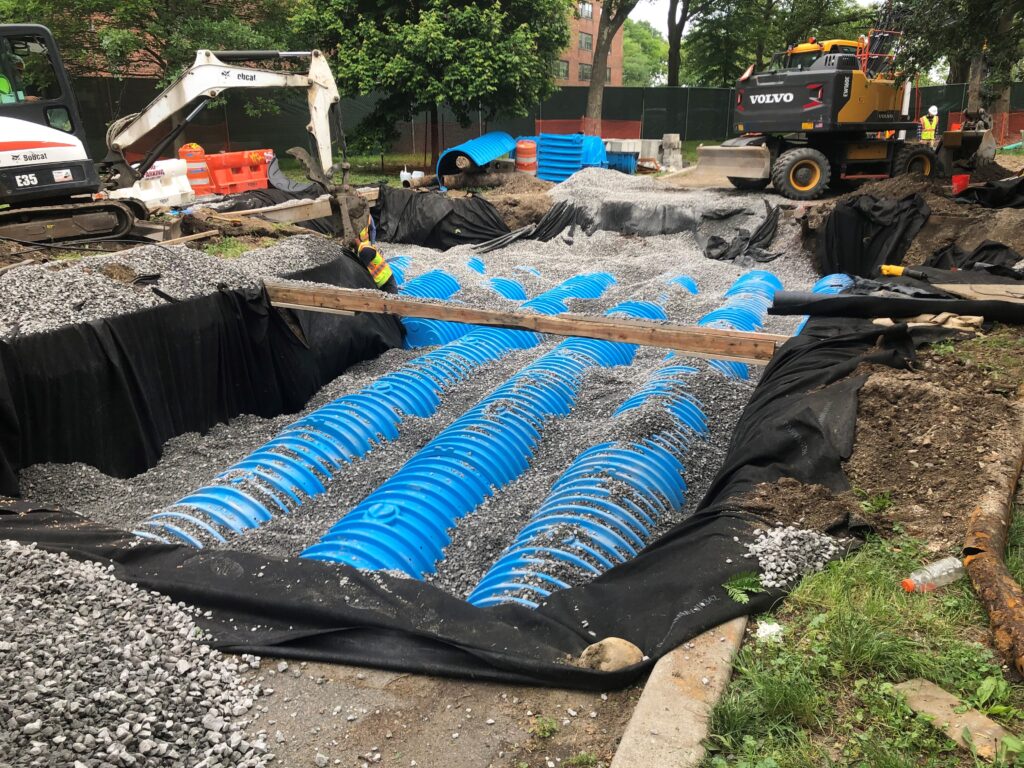Green Infrastructure Installations Help Tackle Excess Stormwater
On November 8, the New York City Department of Environmental Protection (DEP) announced its progress on drainage upgrades at 19 NYCHA properties. The $29 million project involves the construction of “green infrastructure” installations that will capture approximately 55 million gallons of stormwater in a typical year, easing pressure on neighborhood sewers during rainstorms and extreme flooding. Work has already been completed at seven of the 19 developments, and construction is underway at another five sites.
Rain gardens, bioswales, permeable surfaces, and subsurface stormwater storage are examples of green infrastructure solutions. Each green infrastructure installation allows stormwater to be absorbed or stored, which minimizes ponding and keeps stormwater from entering the sewer system. Adam Benditsky, Green Infrastructure Program Manager at NYCHA, explained the importance of these innovations: “As the effects of global climate change become more significant and the population of the city increases, substantial additional pressure will be placed on the combined sewers. Without proactive interventions, this will lead to more frequent overflows, which harm sensitive ecosystems, degrade quality of life, and endanger public health.”
To prevent combined sewer overflows, DEP and NYCHA are developing nature-based and engineered solutions that restore the natural water cycle and upgrade aging infrastructure. In October, DEP completed the replanting of the bioretention areas at the Bronx River Houses. Additionally, NYCHA and Grain Collective are working with Youth Ministries for Peace and Justice, Children’s Arts & Science Workshops, and Bronx River Houses residents to develop a community stewardship plan. Youth and seniors are learning about the benefits of green infrastructure and are working to convert open green space into a butterfly garden.

Edenwald rain garden 
Youth learn about porous pavement as part of the community stewardship project 
Vegetative green infrastructure at Hope Gardens
Another recent stormwater management project was a drainage upgrade at Gowanus Houses in Brooklyn. This work involved the construction of nine green infrastructure installations that will capture nearly two million gallons of stormwater in a typical year. By capturing the stormwater that falls on the development and keeping it out of the sewer system, the project will ease pressure on the neighborhood’s sewer system during rainstorms, decreasing overflows into the Gowanus Canal.
Mr. Benditsky noted that green infrastructure projects are coming to other NYCHA developments in 2022: “We are upgrading our vegetative green infrastructure assets in the Bronx and adding significantly more underground stormwater detention assets in Brooklyn and Queens.”
Mr. Benditsky said that NYCHA and DEP are also working on “cloudburst” solutions at two developments: “We are designing cloudburst solutions at Clinton Houses in East Harlem and South Jamaica Houses in Eastern Queens, both of which will help mitigate the effects of severe storms and provide new resident amenities, including a sunken basketball court with tiered seating and new landscaping features.”
The green infrastructure demonstration projects began in 2012 as the combined effort of DEP, NYCHA, New York State’s Department of Environmental Conservation, and the NYC Economic Development Cooperation, to ensure a cleaner and greener New York City for generations to come.

Replanting of the bioretention area at Bronx River Houses 
Sub surface retention at Linden Houses







